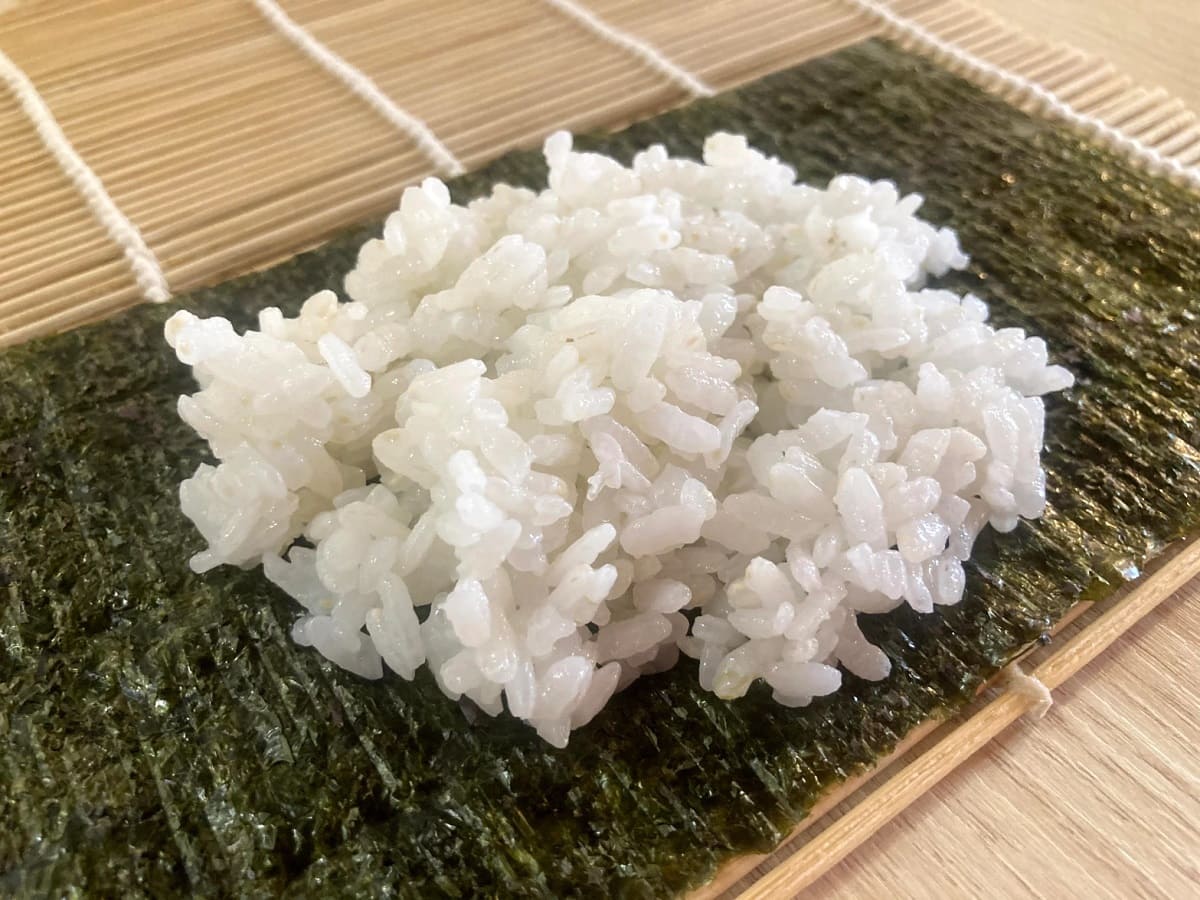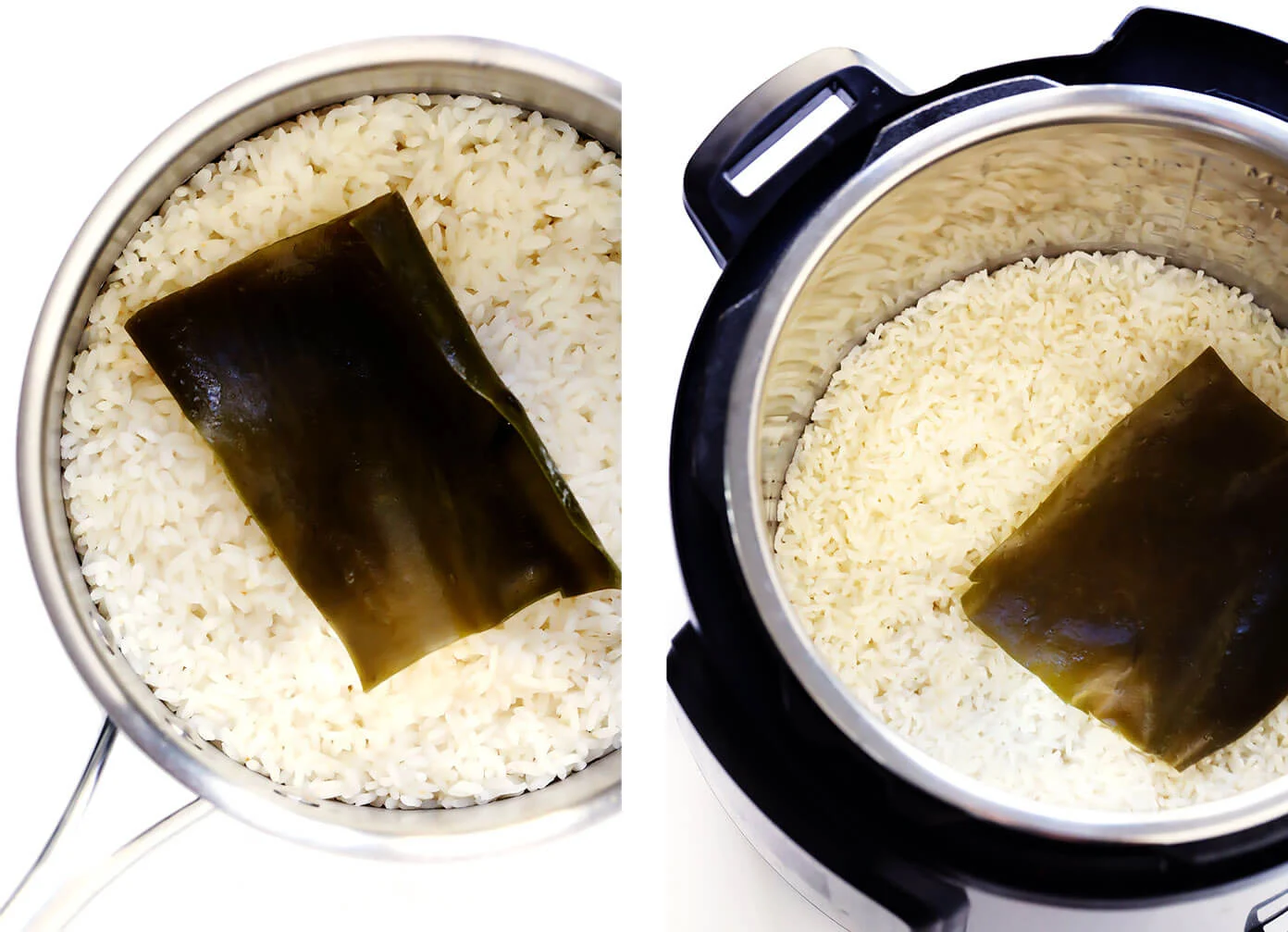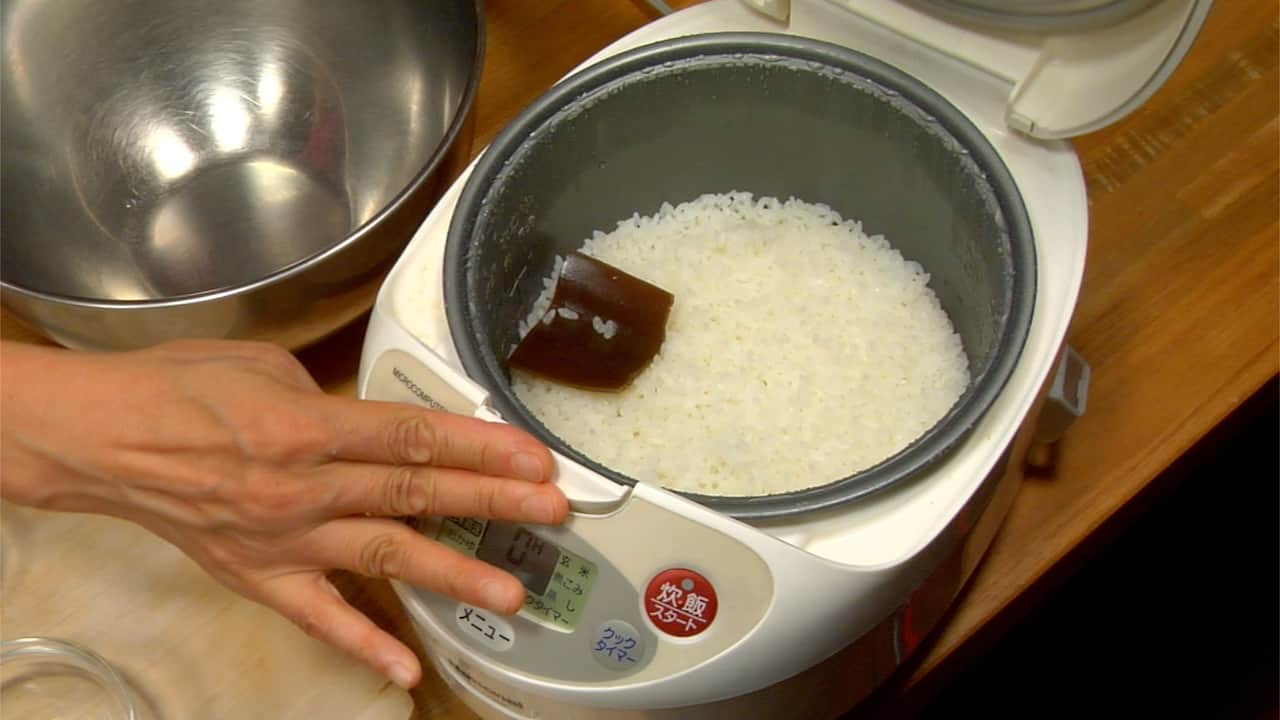

Articles
How To Store Sushi
Modified: December 7, 2023
Learn how to store sushi properly with our informative articles. Keep your sushi fresh and delicious for longer!
(Many of the links in this article redirect to a specific reviewed product. Your purchase of these products through affiliate links helps to generate commission for Storables.com, at no extra cost. Learn more)
Introduction
When it comes to enjoying sushi, freshness is key. The delicate flavors and textures of sushi are best experienced when the sushi is made and eaten on the same day. However, there are times when you might have leftover sushi or want to store sushi for later consumption. Properly storing sushi is essential to maintain its quality and prevent the growth of bacteria.
In this article, we will guide you on how to store sushi correctly to ensure its freshness and flavor. From choosing the right storage container to maintaining the ideal temperature, we will provide you with all the necessary information to keep your sushi delicious and safe to eat.
So, whether you have some nigiri sushi, sushi rolls, or sashimi that you want to store, read on to learn the best practices for storing sushi.
Key Takeaways:
- Properly storing sushi is crucial for maintaining its freshness and flavor. From choosing the right containers to maintaining the ideal temperature, every step counts in preserving the delicate textures and tastes of your favorite sushi varieties.
- Whether you have leftover sushi or want to store it for later consumption, following the right practices ensures that your sushi remains edible and safe to eat. By prioritizing freshness and proper handling, you can continue to enjoy the exquisite flavors of sushi at your convenience.
Read more: How To Store Sushi Overnight
Choosing the Right Storage Container
Choosing the right storage container is crucial to keep your sushi fresh and prevent any contamination. When selecting a container, opt for airtight and food-safe options, such as glass or plastic containers with tight-fitting lids.
Glass containers are preferred because they do not retain odors or flavors from previous foods. Additionally, glass containers are easy to clean and can be used in the microwave if you plan on reheating the sushi. Plastic containers are also a good option as long as they are BPA-free and food-grade.
Avoid using containers made of materials that can react with the sushi, such as metal or aluminum foil. These can alter the taste of the sushi and affect its quality.
Furthermore, choose a container that is appropriately sized to accommodate the sushi without overcrowding. Overcrowded containers can lead to the sushi becoming squished and losing its shape.
Remember to label the container with the date of storage to keep track of its freshness. This will help you identify when the sushi was stored and ensure you consume it within the recommended time frame.
Preparing the Sushi for Storage
Before storing sushi, it is important to prepare it properly to maintain its taste and texture. Here are some steps to follow:
1. Remove any garnishes: If your sushi is topped with garnishes like green onions or fish roe, remove them before storing. These garnishes are delicate and can become soggy or lose their crispness in the refrigerator.
2. Separate different types of sushi: If you have a variety of sushi, such as nigiri, sushi rolls, and sashimi, it is best to store them separately. Different types of sushi have different storage requirements, and storing them together can affect their flavors and textures.
3. Separate soy sauce: If your sushi comes with a small container of soy sauce, it is advisable to keep it separate from the sushi during storage. Soy sauce can make the sushi rice moist and affect its texture.
4. Check for freshness: Inspect the sushi to ensure it is fresh before storing. If you notice any signs of spoilage, such as a foul smell, sliminess, or discolored fish, it is best to discard it rather than storing it.
5. Pat dry excess moisture: Sushi can sometimes be moist, especially the fish or seafood used in nigiri or sashimi. Use a clean paper towel to gently pat dry any excess moisture before storing. This will help prevent the sushi from becoming soggy or developing a strange texture.
By following these steps, you can ensure that your sushi is prepared properly for storage, ready to be enjoyed at a later time without compromising its quality.
Wrapping and Storing Sushi Rice
Sushi rice is a critical component of sushi, and it requires proper handling and storage to maintain its texture and taste. Here’s how to wrap and store sushi rice:
1. Use plastic wrap or airtight container: Transfer the sushi rice into a bowl or container with a tight-fitting lid. If using a bowl, cover it tightly with plastic wrap, ensuring that there are no air pockets. Alternatively, you can use an airtight container to store the sushi rice. This will prevent moisture loss and keep the rice fresh.
2. Store in the refrigerator: Place the wrapped or containerized sushi rice in the refrigerator. The cool temperature will help slow down bacterial growth and maintain the quality of the rice. Avoid storing sushi rice at room temperature for an extended period as it can lead to the growth of harmful bacteria.
3. Do not compress the rice: Sushi rice is delicate and can lose its fluffy texture if compressed. Avoid pressing down on the rice when wrapping or transferring it to the container. Allow it to retain its natural fluffiness.
4. Use within 24 hours: Sushi rice is best consumed within 24 hours of being prepared. After this time, the rice may become hard or lose its flavor and texture. Therefore, it is recommended to use the sushi rice promptly to enjoy the best taste.
By properly wrapping and storing sushi rice, you can ensure that it remains fresh and delicious for your next sushi meal.
Storing Nigiri Sushi
Nigiri sushi, consisting of a slice of seafood placed on top of a small mound of sushi rice, requires careful storage to preserve its delicate flavors and textures. Here’s how to store nigiri sushi:
1. Separate sushi rice and fish: To maintain the quality of both the rice and the fish, it is best to store them separately. Place the sushi rice in an airtight container or wrap it tightly in plastic wrap. For the fish, cover it with a slightly damp paper towel to prevent it from drying out.
2. Store in the refrigerator: Place the sushi rice and fish in separate compartments of the refrigerator. Keep them away from strong-smelling foods to prevent any transfer of odors. The ideal temperature for storing nigiri sushi is between 35 and 41 degrees Fahrenheit (2 to 5 degrees Celsius).
3. Consume within 24 hours: Nigiri sushi is best enjoyed within 24 hours of being prepared. The longer it is stored, the greater the risk of the rice becoming hardened and the fish losing its freshness. Ensure that you consume the sushi within this timeframe to enjoy the best flavors and textures.
4. Bring to room temperature before consuming: Before eating the stored sushi, allow it to come to room temperature for around 15 minutes. This will enhance the flavors and texture of the sushi, making it more enjoyable to eat.
By following these steps, you can store nigiri sushi properly and maintain its quality until you’re ready to savor this delectable delicacy.
Read more: How To Store Leftover Sushi
Storing Sushi Rolls
Sushi rolls, also known as makizushi, require special care when it comes to storage. Whether you have homemade sushi rolls or leftovers from a restaurant, follow these steps to ensure their freshness:
1. Wrap tightly: Start by wrapping the sushi roll tightly with plastic wrap. This will help maintain its shape and prevent it from drying out in the refrigerator. Make sure the plastic wrap is completely sealed to prevent any air from entering.
2. Slice before storage (optional): If you have sushi rolls that are already sliced into bite-sized pieces, you can store them as individual pieces. Otherwise, you can store the entire roll intact and slice it into individual pieces before serving.
3. Store in an airtight container or wrapped in plastic wrap: Place the wrapped sushi rolls in an airtight container or wrap them in additional layers of plastic wrap. This will provide an extra layer of protection against moisture loss and contamination.
4. Store in the refrigerator: Place the sushi rolls in the refrigerator, ideally on the top shelf where the temperature is the most consistent. Avoid storing them near strong-smelling foods that could impart unwanted flavors to the sushi.
5. Consume within 24 hours: Sushi rolls are best consumed within 24 hours to maintain their freshness. Beyond this time, the seaweed wrapper may become soft and lose its crunch, compromising the overall texture of the roll.
By storing sushi rolls properly, you can extend their shelf life and enjoy them at a later time while still savoring their delicious flavors and textures.
Store sushi in the refrigerator at a temperature of 41°F or below. Keep it tightly wrapped in plastic wrap or in an airtight container to prevent it from drying out. Consume within 24 hours for the best quality.
Storing Sashimi
Sashimi, the art of thinly sliced raw fish or seafood, requires careful handling and storage to preserve its delicate flavors and ensure food safety. If you have leftover sashimi or want to store it for later use, follow these steps:
1. Keep it cold: Sashimi is highly perishable, and it is essential to keep it at the proper temperature. Place the sashimi on a plate or tray and cover it with plastic wrap. Then, place the tray in the coldest part of your refrigerator, ideally at a temperature around 32 degrees Fahrenheit (0 degrees Celsius).
2. Separate different types of fish: If you have different types of sashimi, such as tuna, salmon, or yellowtail, it’s best to store them separately. Each type of fish may have its unique flavors and textures, and storing them together can lead to flavor transfer.
3. Use within 24 hours: Sashimi is best enjoyed when it’s fresh. It is recommended to consume it within 24 hours of being sliced. Beyond that time, the quality of the fish may deteriorate, and the texture may become less desirable.
4. Avoid freezing: Sashimi is traditionally consumed fresh, so freezing it is not recommended. Freezing can alter the texture and taste of the fish, resulting in a less satisfying sashimi experience.
5. Serve at room temperature: Before consuming stored sashimi, allow it to come to room temperature for a few minutes. This allows the flavors and textures to restore their optimal qualities and makes the sashimi more enjoyable to eat.
Always remember to prioritize food safety when handling raw fish. If you suspect that the sashimi has gone bad, with a foul smell or slimy texture, it is best to discard it rather than risk consuming spoiled seafood.
By following these guidelines, you can ensure that your stored sashimi remains fresh and maintains its delicate flavors until it’s time to indulge in this exquisite delicacy.
Proper Temperature for Storing Sushi
The proper temperature for storing sushi is crucial to maintain its freshness and prevent the growth of harmful bacteria. Here’s what you need to know:
1. Refrigeration is key: Sushi should always be stored in the refrigerator to keep it fresh and safe to eat. The ideal temperature range for storing sushi is between 35 and 41 degrees Fahrenheit (2 to 5 degrees Celsius).
2. Rapidly cool freshly made sushi: If you have just made sushi at home or received it from a restaurant, it’s important to cool it down as quickly as possible. This prevents the growth of bacteria that can lead to foodborne illnesses. Place the sushi in the refrigerator within 1-2 hours of preparation or purchase.
3. Avoid storing at room temperature: Sushi should never be left at room temperature for an extended period. Room temperature is conducive to bacterial growth, and leaving sushi out for too long can increase the risk of foodborne illnesses. It’s crucial to refrigerate sushi promptly to keep it safe.
4. Properly regulate refrigerator temperature: Ensure that your refrigerator is set to the recommended temperature and regularly check its accuracy. Use a refrigerator thermometer to confirm that it stays within the safe range (35-41 degrees Fahrenheit or 2-5 degrees Celsius).
5. Prevent temperature fluctuations: Avoid frequently opening and closing the refrigerator door as it can cause temperature fluctuations and compromise the quality of the sushi. Keep the sushi in a designated part of the refrigerator where the temperature is consistent, such as the top shelf.
By storing sushi at the proper temperature, you can ensure its freshness and minimize the risk of foodborne illnesses. Always prioritize food safety to enjoy sushi at its best.
Recommended Storage Time for Sushi
While sushi is best enjoyed fresh, there are guidelines for how long it can be safely stored before it should be consumed. Here are some recommended storage times for different types of sushi:
1. Nigiri Sushi: Nigiri sushi, which consists of a slice of seafood on a bed of rice, is best consumed within 24 hours of being prepared. The rice may become hard or lose its moisture if stored for longer periods. It’s advisable to enjoy nigiri sushi on the same day it’s made to fully appreciate its flavors and textures.
2. Sushi Rolls: Sushi rolls, also known as makizushi, can be stored for a slightly longer period of time compared to nigiri sushi. It is recommended to consume sushi rolls within 24-48 hours after they are made. Beyond this time, the seaweed wrapper may become slightly soft, affecting the roll’s texture.
3. Sashimi: Sashimi, which features thinly sliced raw fish or seafood, should be stored for the shortest period among sushi varieties. It is best to consume sashimi within 24 hours of being sliced. The delicate nature of sashimi makes it prone to spoilage and loss of freshness over time.
These recommended storage times are general guidelines to ensure the quality and safety of sushi. However, it’s important to note that factors like the freshness of the ingredients and how the sushi was handled can influence its shelf life. Always use your judgment and rely on your senses by checking for any signs of spoilage, such as an off smell or unusual texture.
Remember, when it comes to sushi, it’s better to err on the side of caution and enjoy it as soon as possible to savor its optimal flavors and textures.
Read more: How To Store Sushi Bake
Reheating and Consuming Leftover Sushi
If you find yourself with leftover sushi and want to enjoy it again, there are a few things to consider when reheating and consuming it:
1. Reheating sushi: Sushi is traditionally enjoyed cold, and reheating it can affect its taste and texture. While it is possible to reheat sushi, it’s important to do it gently to prevent the rice from becoming too dry or sticky. The best method for reheating sushi is to use a microwave on a low power setting or to gently steam it. Keep in mind that reheating sushi may alter its original freshness, and it is generally recommended to consume it cold as intended.
2. Eating cold leftover sushi: If you prefer to enjoy leftover sushi cold, there are a few things to keep in mind. Firstly, bring the sushi to room temperature before eating to enhance its flavors. Allow it to sit at room temperature for about 15 minutes to let the flavors develop and the sushi to regain its natural textures. Additionally, consider adding a touch of soy sauce, wasabi, or pickled ginger to enhance the flavors of the sushi.
3. Quality and safety: Before reheating or consuming leftover sushi, it’s important to ensure its quality and safety. Check for any signs of spoilage, such as an off smell, sliminess, or discolored fish. If you notice any of these signs, it’s best to discard the sushi as consuming spoiled seafood can lead to foodborne illnesses.
4. Enjoy within a reasonable time frame: Leftover sushi should be consumed within a reasonable time frame to maintain its taste and quality. While sushi can be stored for a short period, it is generally recommended to consume it within 24 to 48 hours of being prepared. The longer sushi sits, the higher the risk of it losing its freshness and becoming less enjoyable to eat.
Remember, sushi is best enjoyed when it is freshly made. While reheating or eating leftover sushi is still an option, it may not be the same as enjoying it when it’s prepared. Nonetheless, with proper handling and consideration, you can still savor the flavors of your leftover sushi.
Conclusion
Storing sushi properly is essential to preserve its flavors, textures, and overall quality. Whether you have leftover sushi or want to store it for later consumption, following the right practices ensures that your sushi remains edible and safe to eat. From choosing the right storage containers to maintaining the proper temperature, every step counts in keeping your sushi fresh.
Start by selecting airtight and food-safe containers such as glass or BPA-free plastic to store your sushi. Keep in mind that different types of sushi may require separate storage to maintain their unique flavors and textures. Sushi rice should be wrapped tightly and stored in the refrigerator, while individual sushi rolls can be wrapped in plastic and refrigerated as well.
When it comes to nigiri sushi and sashimi, it’s crucial to store them in separate compartments to prevent cross-contamination. The recommended storage time for sushi varies depending on the type, with nigiri sushi best consumed within 24 hours of preparation and sashimi ideally enjoyed within the same day it’s sliced.
Remember to maintain the proper temperature range of 35 to 41 degrees Fahrenheit (2 to 5 degrees Celsius) for storing sushi in the refrigerator. Avoid leaving sushi at room temperature for extended periods to minimize the risk of bacterial growth.
While reheating sushi is an option, it’s recommended to consume sushi cold as intended. Bringing leftover sushi to room temperature before enjoying it allows the flavors to develop and ensures a better eating experience.
Ultimately, freshness is key when it comes to sushi. It’s always best to consume sushi as soon as possible after it’s made. However, by following these guidelines, you can extend the shelf life of your sushi and continue to enjoy its exquisite flavors and delicate textures.
So, the next time you find yourself with leftover sushi, remember to store it correctly and savor the taste of your favorite sushi creations whenever you desire.
Frequently Asked Questions about How To Store Sushi
Was this page helpful?
At Storables.com, we guarantee accurate and reliable information. Our content, validated by Expert Board Contributors, is crafted following stringent Editorial Policies. We're committed to providing you with well-researched, expert-backed insights for all your informational needs.














0 thoughts on “How To Store Sushi”